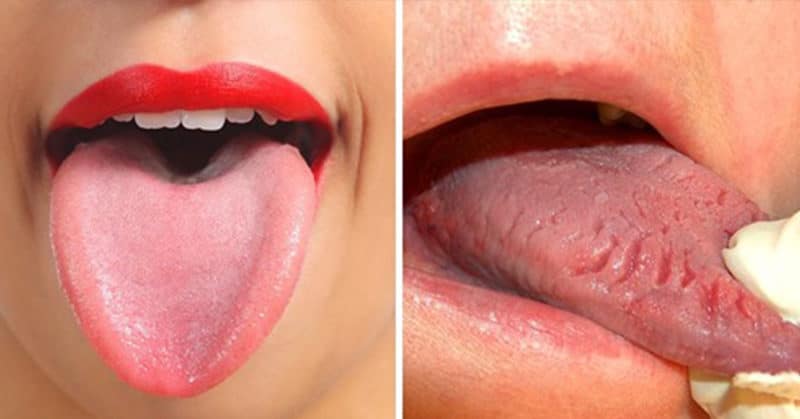
Changes in the feel or look of the tongue can reveal a lot about your health and indicate certain health issues.
Our bodies are the only true home we’ll ever have, so we need to take proper care of them. While we might often ignore or misunderstood them, our body always sends up messages that signal when something out of the ordinary is happening within it.
Therefore, if we learn to follow these guidelines and understand the signs our bodies send, we can treat any health issues on time and prevent major complications. The tongue is often the first place where we should look, as its appearance can reveal a lot about our general health.
Dr. Imogen Bexfield, Medical Director at White Swan Aesthetics explains the look of a normal, healthy tongue:
“The color will vary from person to person, but generally it should be pink with little bumps on it that are called papillae.”
Here are the 7 most common changes in the tongue that indicate that you should consider calling your doctor:
1. White Plaque on your Tongue
The swollen papillae on the tongue lead to plaque, as the debris, bacteria, and dead cells lodged between them create a white coating. This condition is known as papillae hypertrophy or inflammation, and can result from:
2. Geographic Tongue
In this case, the tongue has reddish, smooth patches, surrounded by white borders. It is not contagious, usually causes no symptoms, and does not lead to any long-term health conditions.
It can last for weeks and even years.
Geographic tongue is more common in people who have psoriasis and Reiter’s Syndrome, women who use hormonal birth control, people under emotional stress, in the case of allergies, in diabetics, or in those who have a certain vitamin deficiency.
3. Strawberry Tongue
When the tongue is red, bumpier than usual, with swellings that make it look like a strawberry or raspberry, it might be a sign that you have some of the following conditions:
4. Black Hairy Tongue
While this condition looks alarming, it is harmless, painless, and temporary. It is a result of the accumulation of dead skin cells on the papillae (tiny projections) on the surface of the tongue. Being longer, they trap tobacco food, yeast, and bacteria, leading to bad breath.
These are the most common causes of it:
5. Lichens Planus
This chronic inflammatory condition affects the mucous membranes inside the mouth and causes red swollen tissues, white lacy patches, and open sores on the tongue or inside of the mouth.
Speak with your doctor in case you notice it, as experts cannot specify its exact cause and it might increase the risk of mouth cancer. It is not contagious and usually develops when the immune system attacks the cells of the oral mucous membrane.
6. Thrush
Oral thrush, or Oral Candidiasis, is caused by the excessive buildup of the fungus Candida albicans on the lining of your mouth.
It causes creamy white lesions on the tongue, and often on the inner lining of the cheeks, the back of the throat, the roof of your mouth, and even on the gums or tonsils as well.
It is not a serious issue in people with a healthy immune system, but it can cause serious systemic candida infection in people who are immunocompromised.
It can be prevented by avoidance of sugar-rich foods, good oral hygiene, maintaining stable blood sugar, and treating conditions like dry mouth and vaginal yeast infections.
7. Blisters
Blisters on the tongue that do not heal are a reason to visit your doctor as well, as they might indicate mouth cancer. Oral cancer can also cause symptoms like loose teeth, growths in the mouth, unusually whitish or reddish patches of skin in the mouth, issues swallowing and chewing, numbness in the face or neck, and difficulty speaking.
In most cases, the symptoms revealed by the changes in the appearance of the tongue indicate minor health issues and problems easy to treat.
Yet, some of them could be life-threatening, so make sure you always consult your doctor.
Source: www.glamourmagazine.co.uk